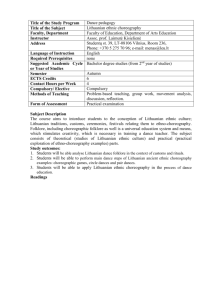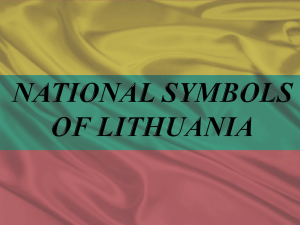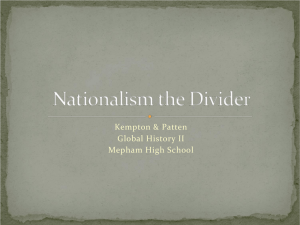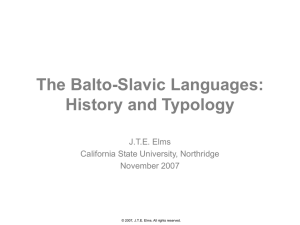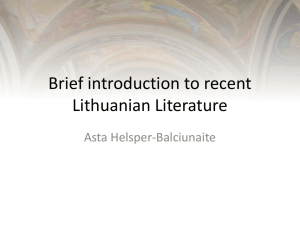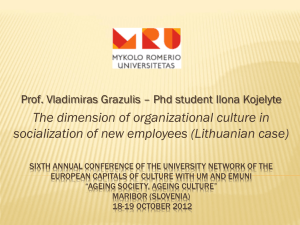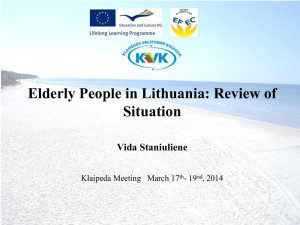Mapping Lithuanians: Examining Russian Imperial Ethnic
advertisement
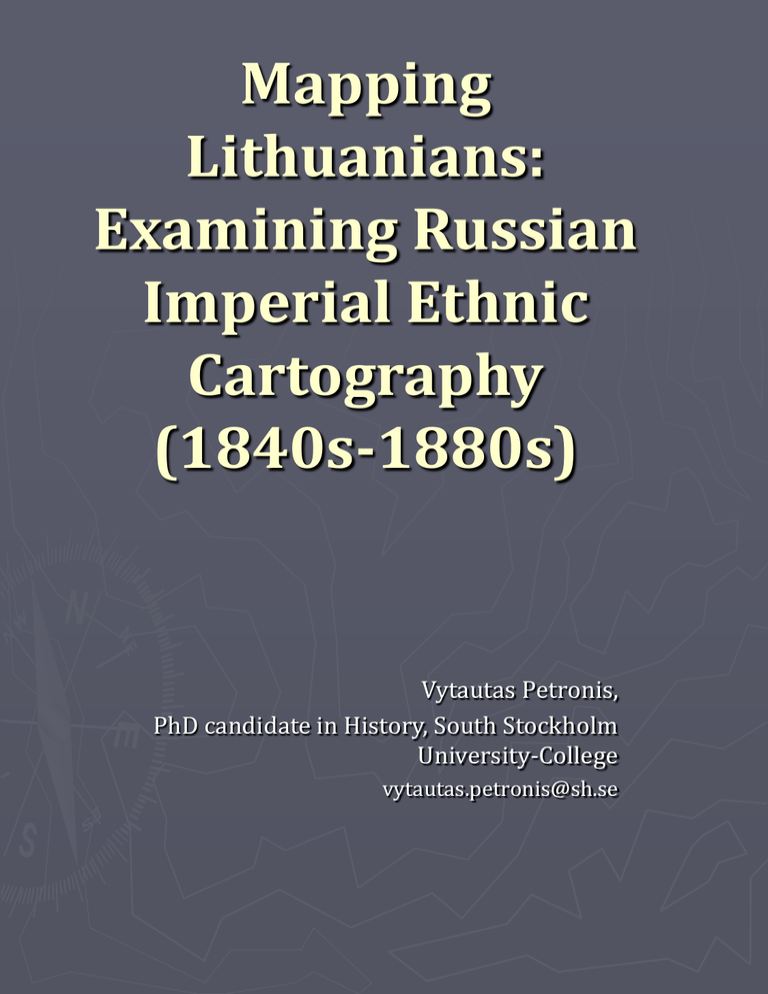
Mapping Lithuanians: Examining Russian Imperial Ethnic Cartography (1840s-1880s) Vytautas Petronis, PhD candidate in History, South Stockholm University-College vytautas.petronis@sh.se Ethnic cartography in the Russian Empire ► Cartography: 1. The first (Petrine) instrumental land survey of imperial Russia (1720-1744); The General Land Survey (1765- ~1840s); - Notes in the “economical journals” (ekonomicheskie zhurnaly): - Collecting economic, geographical and other information about the surveyed territories; 2. Ethnic cartography in the Russian Empire ► 1. 2. 3. Ethnography: First ethnographical investigations began during the 18th century; In the first half of the nineteenth century numerous “learned societies” appeared; they greatly expanded the understanding of what and where the Russian Empire was, and who inhabited its space; A major turning point in the scientific ethnographic research occurred after the establishment of the Imperial Russian Geographic Society (IRGS) in 1845; Šafařik (1842) The Latvian and Lithuanian ethno-linguistic territories (a fragment from Šafařik’s map in Slovanský národopis (1842)) Koeppen (1848; 1851) The Lithuanian ethno-linguistic territory around the city of Vil’na (fragments from Koeppen’s Etnograficheskii atlas Evropeiskoi Rossii (1848)) Koeppen (1848; 1851) The Lithuanian and Latvian ethnic territory (fragment from Koeppen’s Etnograficheskaia Karta Evropeiskoi Rossii (1851)) Rittikh (1862 (1864)) The Lithuanian inhabited territory in Rittikh’s Atlas narodonaseleniia Zapadno-Russkogo kraia po veroispovedaniiam (1864) Erckert (1863) Alterations of the ethnic composition in the North Western provinces found in the French (on the left) and Russian (on the right) Erckert (1863) The Latvian and Lithuanian inhabited territories (fragment from Erckert’s Atlas Ethnographique des provinces habitées en totalité ou en partie par des Polonais (1863)) Rittikh (1875) The Lithuanian ethnic territory on Rittikh’s Etnograficheskaia karta Evropeiskoi Rossii (1875 - fragment) Concluding remarks ► ► ► ► ► Šafařik’s work was the first modern ethno-linguistic map, which beside the Slavs also indicated the territories of other ethnic groups; The imperial ethnic cartographers were predominantly of German origin; Erckert’s atlases were illustrated possibilities of ideological manipulation in ethnic cartography; Lithuanian ethnic territory was gradually shrinking. It was reflected in the maps. The political situation and ideology if the time allowed scientists interpreting multiethnic and multilingual territories in a “politically correct way”; The Lithuanian National Movement, paradoxically enough, greatly relied upon the ideological ethno-cartographic works (Erckert and partially Rittikh (1862)), because they depicted the biggest Lithuanian territory.
